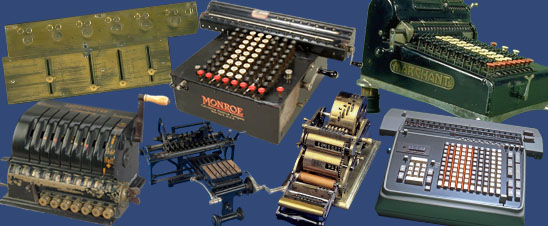This experimental model is one of the first, if not the first , calculating machine built in the United States. It was made by Frederick Parsons Warren (1839-1875) of Three Oaks, Michigan, in 1872.The metal machine has a row of 11 result dials that slide along the back.
- Description
-
This experimental model is one of the first, if not the first , calculating machine built in the United States. It was made by Frederick Parsons Warren (1839-1875) of Three Oaks, Michigan, in 1872.
-
The metal machine has a row of 11 result dials that slide along the back. Each dial has a strip of paper numbered from 0 to 9 twice around the rim. Between the dials are spiral gears, which were to be part of the carry mechanism. In front of the dials and gears is a row of seven gear segments. In front of and linked to these are seven additional gear segments. A lever that extends to the front of the machine can be placed in any tooth of one of these forward segments. At the top of the machine is a tilted disc that has four toggles protruding from it.
-
There are no maker’s marks.
-
Compare MA.311938 and MA.311939.
-
According to L. Leland Locke, Warren was a teacher, itinerant photographer, and then watchmaker by trade. His invention was inspired by his reading about Charles Babbage’s difference engine in 1864. He designed his machines to demonstrate what might be done with machinery, not for sale.
-
Reference:
-
L. Leland Locke, “The Warren Calculating Engine,” Business Equipment Topics, October, 1931, vol. 79, p. 8, 9. 48, 49.
- Location
-
Currently not on view
- date made
-
1872
- ID Number
-
MA.311938
- catalog number
-
311938
- accession number
-
155183
